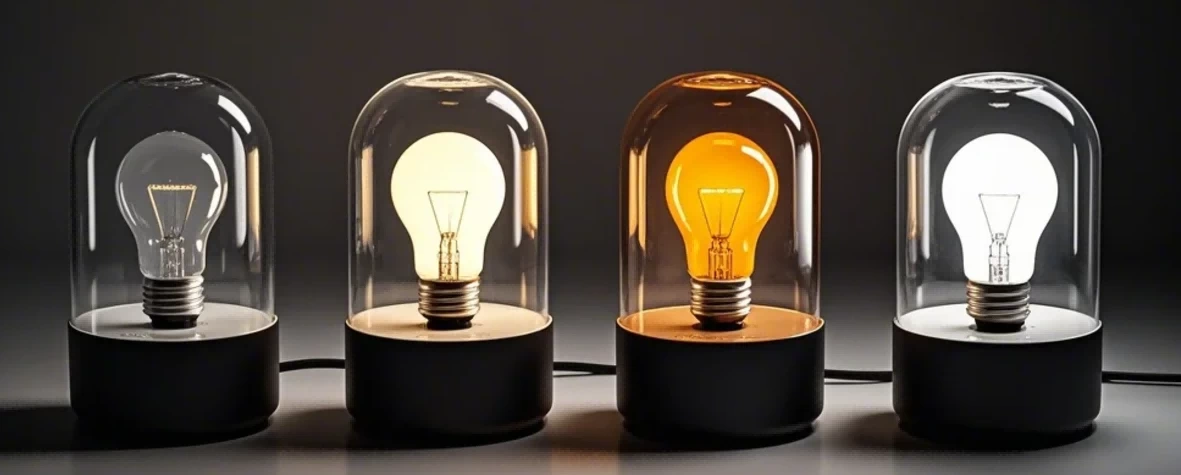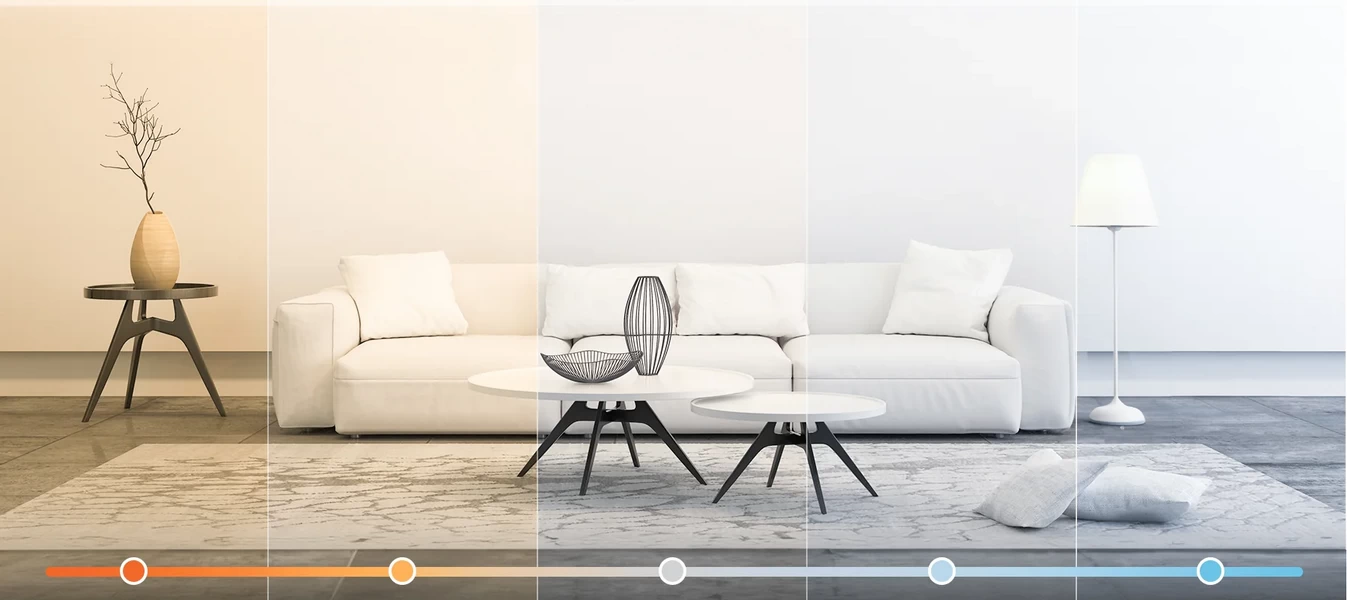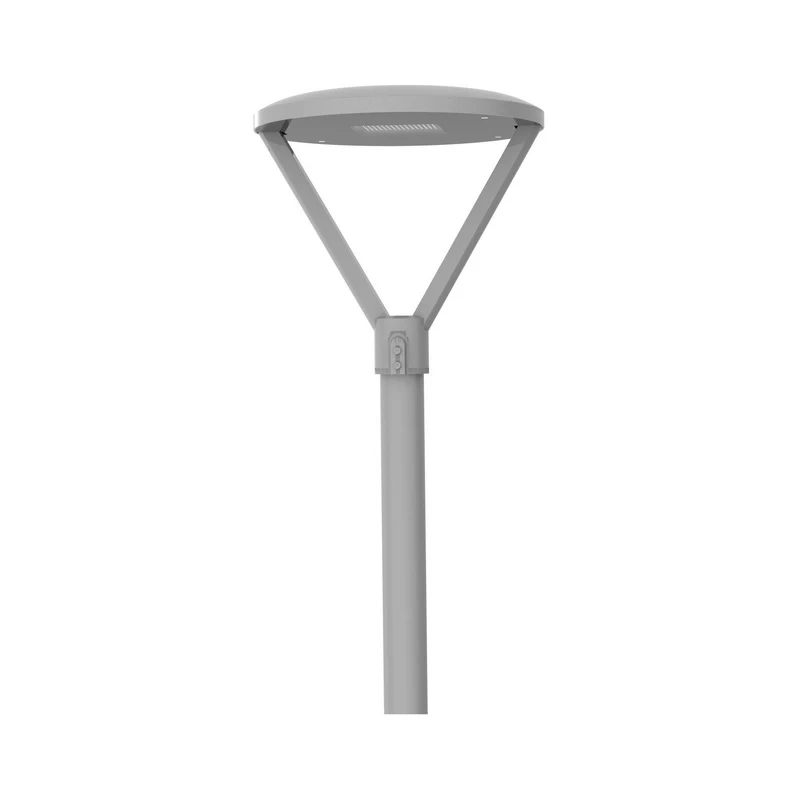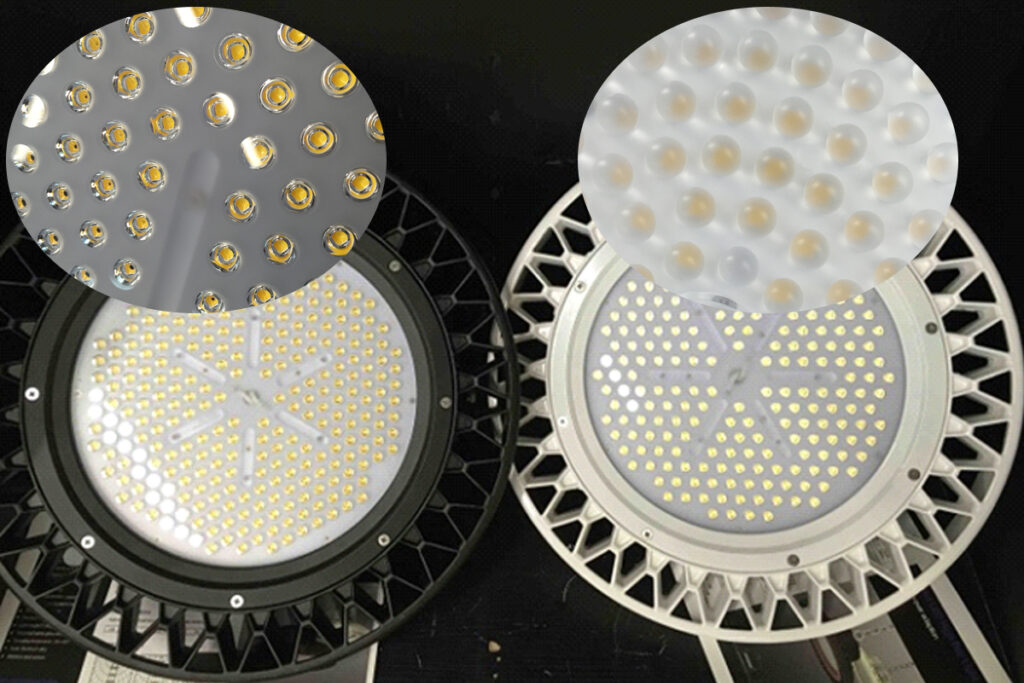Índice
TogglePrefacio: ¿Qué iluminación le conviene más?
La iluminación es esencial para mejorar el ambiente y la utilidad de un espacio. Cada tipo de bombilla tiene sus propias características, ya sea blanca suave, diurna, blanca cálida o blanca brillante. En este artículo analizaremos las diferencias entre estas bombillas para ayudarle a elegir la que mejor se adapte a sus necesidades.
Esta guía también explicará el papel que desempeñan las bombillas LED a la hora de conseguir la iluminación perfecta para diversas áreas, desde aplicaciones comerciales hasta interiores residenciales.

Temperatura de color y luminosidad
La temperatura del color de la luz, expresada en Kelvins (K), influye significativamente en cómo percibimos nuestro entorno. Comprender los rangos de temperatura de las bombillas Blanco suave, Luz diurna, Blanco brillante y Blanco cálido es clave para seleccionar la luz adecuada para cada situación.
Por ejemplo:
- Las bombillas Daylight/Bright White están clasificadas entre 5000K y 6500K, ofreciendo una experiencia de luz más natural y vibrante.
- Las bombillas de color blanco suave oscilan entre 2700K y 3000K, proporcionando un resplandor cálido y acogedor.
Tipos de bombillas Blanco cálido, Luz diurna, Blanco brillante y Blanco suave
Cada tipo de bombilla ofrece una estética única:
- Las bombillas Soft White crean un ambiente cálido y acogedor, por lo que son ideales para salones y dormitorios.
- Las bombillas Daylight/Bright White proporcionan una luz viva y clara, adecuada para cocinas u oficinas.
- Las bombillas de color blanco cálido, con su brillo dorado, son perfectas para comedores y espacios de reunión.

Luz blanca cálida
La luz blanca cálida tiene una temperatura de color entre 2700K y 3000K, lo que crea una luz amarillenta, cálida y suave. Se parece mucho a la luz emitida por una bombilla incandescente tradicional y se asemeja a la luz solar poco después del amanecer o antes del atardecer.
Crea un ambiente cálido, relajante, confortable, íntimo y romántico. Ayuda a estimular la producción de melatonina y es adecuado para uso nocturno.
Es adecuada para dormitorios, salones, comedores, pasillos y cualquier lugar en el que necesite crear un ambiente relajante y cálido. Es la fuente de luz ambiental más habitual en los hogares.
Luz blanca suave: ¿Qué es?
La luz blanca suave se confunde a menudo con la blanca cálida, y su temperatura de color suele oscilar entre 3000K y 3300K. Se centra más en la "calidad" de la luz.
Tiene un tono amarillo cálido, uniforme y suave, que acentúa el confort y minimiza el deslumbramiento. Es adecuado para zonas de descanso como dormitorios, comedores y reuniones.
¿Qué es la luz diurna?
La luz diurna suele tener una temperatura de color entre 5000K y 6500K, con un tinte blanco azulado. Es muy brillante, clara y enfocada. Simula la luz del sol de un mediodía despejado y sin nubes.
Puede mejorar la concentración y el estado de alerta. La luz de alta temperatura de color contiene una mayor concentración de luz azul, que puede suprimir la secreción de melatonina.
Se suele utilizar en cocinas, talleres, almacenes, baños y salas de estudio. No es adecuado para su uso en dormitorios por la noche, ya que puede alterar el sueño.
Luz blanca brillante
La luz blanca brillante tiene una temperatura de color de 4000K a 5000K. Se trata de una luz blanca neutra entre el blanco cálido y la luz diurna.
La luz es blanca pura, ni amarilla ni azulada, brillante y clara, pero no tan fría y dura como la luz del día.
El ambiente que crea: Limpio, eficiente, moderno, profesional y centrado. Proporciona una claridad visual excelente y, al mismo tiempo, es más suave que la luz natural. Es adecuada para oficinas, espacios de trabajo, tiendas, aulas, hospitales, etc. Es una opción muy popular en áreas comerciales y funcionales, y también se está abriendo paso gradualmente en las áreas funcionales de los hogares.

Comparación entre blanco suave, luz diurna, blanco cálido y blanco brillante
| Tipo de luz | Temperatura de color (K) | Impresión en color | Aplicaciones típicas |
|---|---|---|---|
| Blanco cálido | 2700K - 3000K | Cálido, ligeramente amarillo, acogedor y relajante | Dormitorio, sala de estar, comedor, pasillo, habitaciones de hotel |
| Blanco suave | 3000K - 3300K | Luz cálida, suave y agradable a la vista | Dormitorio, salón, comedor, lámparas de escritorio, apliques de pared (sobre todo donde el confort visual es importante) |
| Blanco frío | 4000K - 5000K | Transparente, blanco neutro, alta eficiencia | Oficina, iluminación general de cocina, estudio, baño, comercio minorista |
| Luz diurna | 5000K - 6500K | Brillante, blanco azulado, energizante | Mostrador de cocina, baño, zona de maquillaje/afeitado, espacio de trabajo, zonas críticas para el color |
Elegir la bombilla adecuada para cada zona de la casa o la oficina
A la hora de elegir entre bombillas de color blanco suave, luz diurna y blanco cálido, es esencial tener en cuenta las necesidades específicas del espacio. Para un ambiente cálido y acogedor en un salón o un dormitorio, las bombillas Blanco suave o Blanco cálido proporcionarán confort. En cambio, para espacios de trabajo o cocinas, las bombillas Daylight son ideales para una gran visibilidad.

Blanco suave frente a luz diurna frente a blanco cálido para uso industrial y comercial
En entornos industriales o comerciales, una iluminación adecuada es crucial tanto para la seguridad como para la productividad. Las bombillas de luz diurna suelen ser las preferidas en fábricas o almacenes por su iluminación clara y brillante. Sin embargo, en áreas como oficinas o zonas de descanso dentro de espacios comerciales, el blanco suave o el blanco cálido pueden ser más adecuados. Las soluciones de iluminación de LedRhythm ofrecen una gran variedad de luces LED adaptadas a las distintas necesidades industriales y comerciales. Explore nuestra Iluminación LED de alta eficiencia.
Conclusión: Cómo elegir la iluminación adecuada para su espacio
Los números más bajos son más amarillos o cálidos (como la luz blanca cálida) y los más altos son más azulados o fríos (como la luz diurna).
Sin embargo, el blanco cálido y el blanco suave son muy similares. El blanco cálido enfatiza el color cálido y amarillento. El blanco suave enfatiza una luz más suave. Es mejor confirmar la temperatura de color específica al comprar bombillas blancas suaves.
Consejos
- Experiencia acogedora y relajante: luz blanca cálida/luz blanca suave
- Trabajo claro/discriminación de colores : Luz diurna o luz blanca brillante
- Iluminación brillante, eficiente y confortable : Luz blanca brillante
- Calidez sin deslumbramiento : Luz blanca suave
La gente también pregunta
¿Qué es la luz diurna?
La luz diurna (5000K-6500K) simula la luz solar natural, ofreciendo una iluminación clara y brillante para tareas como leer o cocinar.
¿Qué es la luz blanca cálida?
La luz blanca cálida (2700K-3000K) tiene un tono dorado que crea un ambiente acogedor adecuado para comedores o salones.
¿Qué es la luz blanca brillante?
La luz blanca brillante (4000K-5000K) proporciona una luminosidad neutra y clara, perfecta para baños y garajes.
¿En qué se diferencian el blanco suave, la luz diurna, el blanco cálido y el blanco brillante?
Representan diferentes gamas de temperatura de color, que aportan diferentes percepciones visuales y experiencias de iluminación. Cada lugar requiere una luz diferente.
¿Cuál es la mejor iluminación para entornos industriales?
Las bombillas de luz diurna son las preferidas en fábricas y almacenes por su iluminación vibrante y clara, que mejora la seguridad y la productividad.
¿Qué iluminación se adapta mejor a los espacios comerciales y de oficinas?
Las bombillas de color blanco suave o blanco cálido crean cómodas zonas de relajación, mientras que la luz diurna es óptima para tareas de alta visibilidad.
¿Qué importancia tiene la temperatura del color en la iluminación?
La temperatura del color influye en el ambiente y la funcionalidad. Los tonos cálidos favorecen la relajación, mientras que los fríos mejoran la visibilidad.
¿Por qué elegir luces LED para diferentes necesidades?
Los LED modernos son más eficientes energéticamente, tienen una vida útil más larga y ofrecen una gran variedad de temperaturas de color y ángulos de haz. Esta tendencia hacia la iluminación inteligente es adecuada para diversas aplicaciones residenciales, industriales y comerciales.








